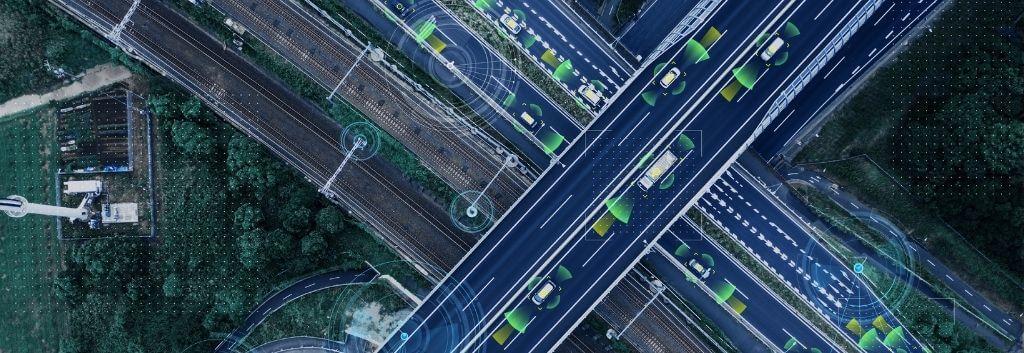
autonomous driving autonomous driving divided into six levels, from 0 to 5, according to the subject of the driving task and driving area. Efforts toward the practical use of Level 4 services that enable
The era of autonomous driving has begun, and the 2020s will be a time when ADAS (advanced driver assistance system)-based automobiles will gradually become autonomous driving.
This time, I summarized the expected timing of commercialization of levels 3 to 5, the current development status and issues.
autonomous driving level 3
Autonomous autonomous driving level 3 (conditional driving automation) was lifted in Japan in April 2020, and international standards were established at the United Nations World Forum for Harmonization of Vehicle Regulations (WP29) in June of the same year, and the ban was lifted worldwide. The circle is likely to widen.
EU countries, which allow free movement within a certain level, have been strongly waiting for international rules, so it seems likely that a wave of lifting the ban will surge in the future along with the development of domestic laws. In the United States, it will be put into practical use under the authority of each state, but there is a high possibility that there will be a need to unify various conditions such as speed limits, and attention will be paid to trends in federal law.
Development status of level 3 vehicles of each automaker
In China, Changan Automobile and EV (electric vehicle) start-up Human Horizons have announced that they will start mass-producing Level 3 vehicles within 2020, and the government's movements are also attracting attention. Both the United States and China are participating in WP29, and there is a strong view that the ban will be lifted in line with international standards for the time being.
On the development side, Audi announced the level 3 autonomous driving system "Audi AI Traffic Jam Pilot" in line with the "Audi A8" released in 2017, but the situation remains sealed due to undeveloped laws. in the process of.

In Japan, Honda received the world's first approval for the new model "Legend" equipped with level 3 autonomous driving functions in November 2020, and announced the release of the "world's first level 3" mass-produced vehicle ahead of Chinese competitors. did.
In Europe, German BMW plans to start mass production of vehicles equipped with Level 3 in 2021, and Daimler also plans to add Level 3 functions with the option system "DRIVE PILOT" in 2021.
Full-fledged level 3 market opens in 2021
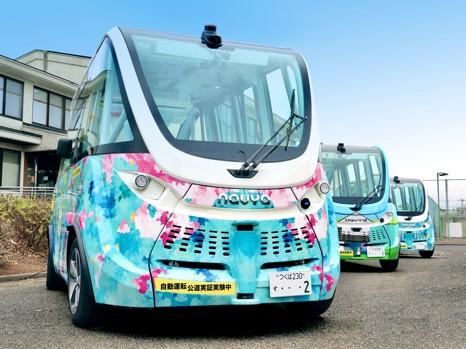
Looking at both legal development and level 3 equipped vehicles, the full-fledged level 3 market is likely to open in 2021. For the time being, it is expected to be operated in a narrow ODD (Operating Design Domain) of 60 km/h or less (when congested) on expressways in good weather, but level 3 vehicles from various automobile manufacturers are available and a certain amount of achievements have been accumulated on public roads. If this is the case, it will be possible to drive at speeds of 80 km/h or less and change lanes.
Previously, in November 2020, Sakaimachi, Ibaraki Prefecture, began operating a transportation service with a safety driver on public roads as the first local government initiative, and although it falls under Level 2 legally, it is technically level 2. Achieves the equivalent of level 3. the Company Macnica, in cooperation with BOLDLY, has introduced the autonomous driving bus "NAVYA ARMA" made by France's NAVYA, and it is operating regularly on the local routes in the town.
In addition, according to a survey on the global market for autonomous driving systems released by Yano Research Institute in May 2019, the number of new vehicles equipped with Level 3 will be 800 in 2020, 220,000 in 2023, and 2025. Approximately 3.7 million units in 2030, and approximately 3.73 million units in 2030. It is expected to continue to grow steadily until around 2030.
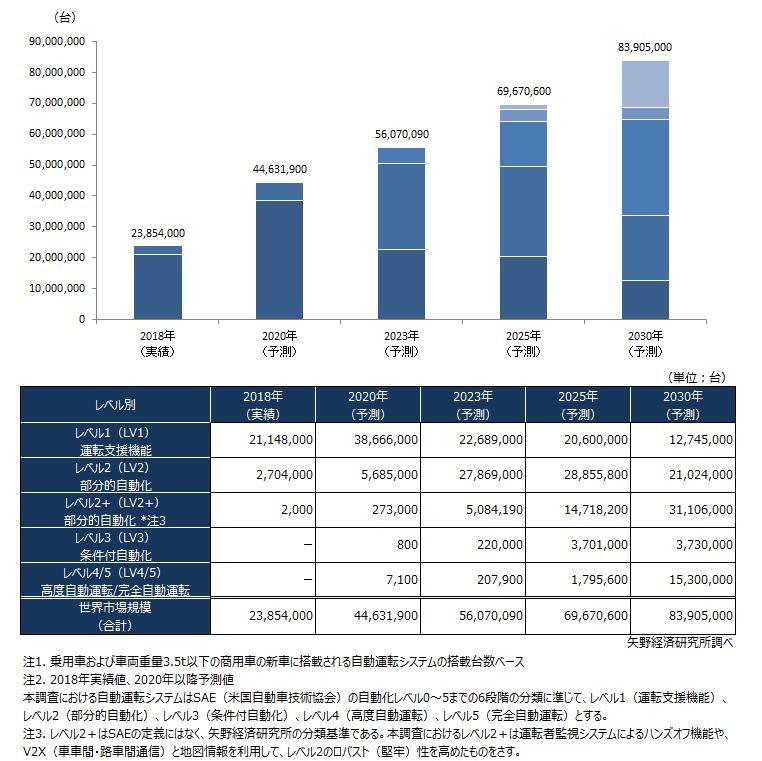
Global Market Size Forecast for ADAS/Autonomous autonomous driving Systems (Source: Yano Research Institute)
autonomous driving level 4
Level 4 (advanced driving automation), which enables driving without a driver in a specific ODD, is undergoing practical demonstrations around the world on the condition that a safety driver is attached.
In the United States, Google-based Waymo launched a Level 4 autonomous driving taxi service in Arizona in 2018, and in 2019, some users were able to operate taxis without a safety driver. In 2020, it is expanding to the general public.
Plans in the Public-Private ITS Initiative/Roadmap 2020
According to the "Public-Private ITS Concept / Roadmap 2020" formulated by the government, in mixed spaces such as community roads, and in limited spaces such as abandoned railway tracks and BRT (Bus Rapid Transit System) dedicated spaces, safety drivers are installed at about one location each. The target is to start a service with monitoring by , and gradually expand the target, and aim to start an autonomous driving service with only remote monitoring in several places between 2023 and 2025.
In addition, in closed spaces such as factories and airports, the company plans to start an autonomous driving service with only remote monitoring over the next few years from FY2020, and gradually expand it.
For general passenger cars, based on the realization of Level 3, we expect to commercialize Level 4, which enables autonomous driving from the entrance to the exit of expressways, by 2025.
The autonomous driving delivery service that handles delivery is also planned to be realized after 2021 in a limited area by applying the technology of the autonomous driving transportation service.
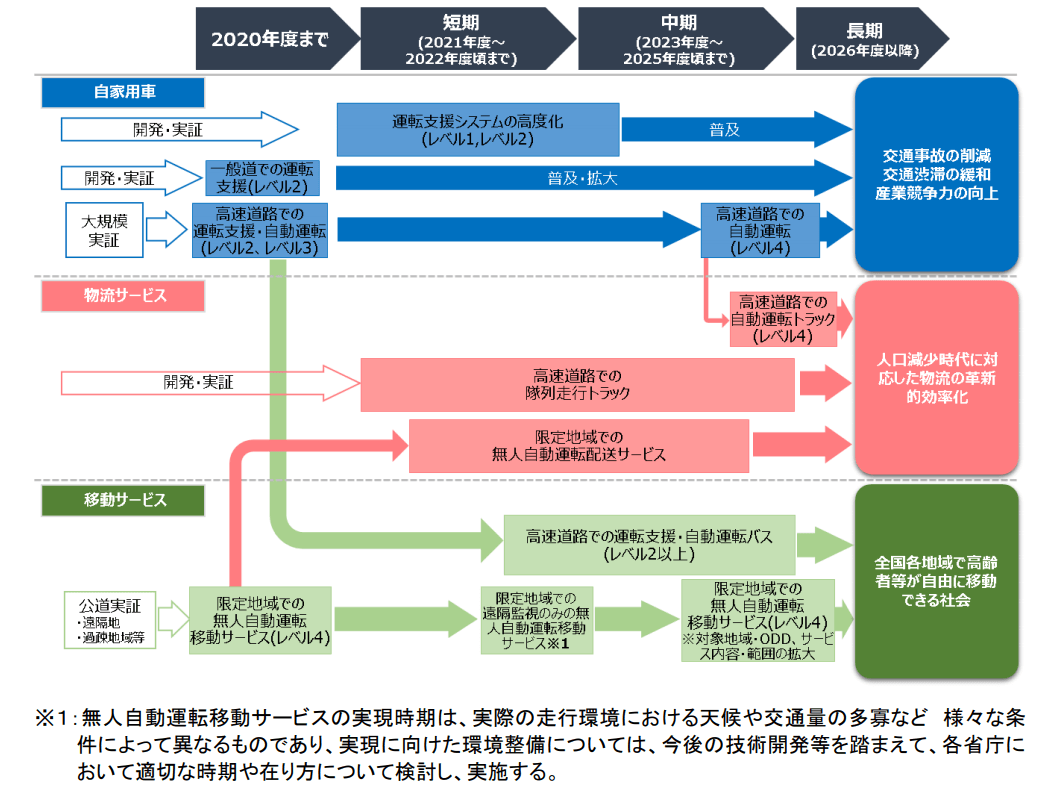
Scenarios for commercialization and service realization of autonomous driving systems (Source: IT Strategic Headquarters "Public-Private ITS Initiative/Roadmap 2020")
The Rise of Remarkable Emerging Powers Overseas
On the development side, in addition to Waymo, IT-related companies such as China's Baidu, Russia's Yandex, ride-hailing service giant Uber and China's Didi Chuxing, Chinese startups WeRide, Pony.ai, AutoX, etc. The rise of emerging powers in anticipation of the future is remarkable.
For private cars, Sweden's Volvo Cars announced in May 2020 a partnership with Luminar, a U.S. company involved in the development of LiDAR (rider), and mentioned "Highway Pilot", a fully autonomous driving technology for highways. ing. Production is expected to start as early as 2022.
According to the aforementioned Yano Research Institute, the number of level 4 and level 5 new vehicles installed will be 7,100 in 2020, about 210,000 in 2023, about 1.8 million in 2025, and 15.3 million in 2030. The survey results continue to grow in numbers.
autonomous driving level 5
Level 5 (complete driving automation), which realizes fully autonomous driving without any restrictions, can be said to be one of the goals in the development of autonomous driving. It is a dream mobility that makes it possible to travel anytime, anywhere regardless of driving area, road, speed, weather conditions, time of day, etc.
Therefore, the hurdle is naturally high. All uncertainties surrounding road traffic must be cleared. It is extremely difficult to drive on complicated roads and roads that do not have boundaries with sidewalks, even in heavy snow and rain. There are quite a few famous engineers who say, "It is difficult to realize with the technology currently conceivable."
Attitudes toward Level 5 in Japan and the European Union
In the Public-Private ITS Initiative/Roadmap 2020, Level 5 is defined as an autonomous driving autonomous driving system that realizes the functions of Level 4 without limitation of ODD, and the technical level is very high. It is assumed that it will take a considerable amount of time,” and did not specify a specific goal.
Overseas, the European Commission of the European Union (EU) has stated that "After all new cars are connected, we aim for a society where fully autonomous driving will become the standard at level 5 in the 2030s." The current situation is that there is almost no roadmap itself that mentions the realization of
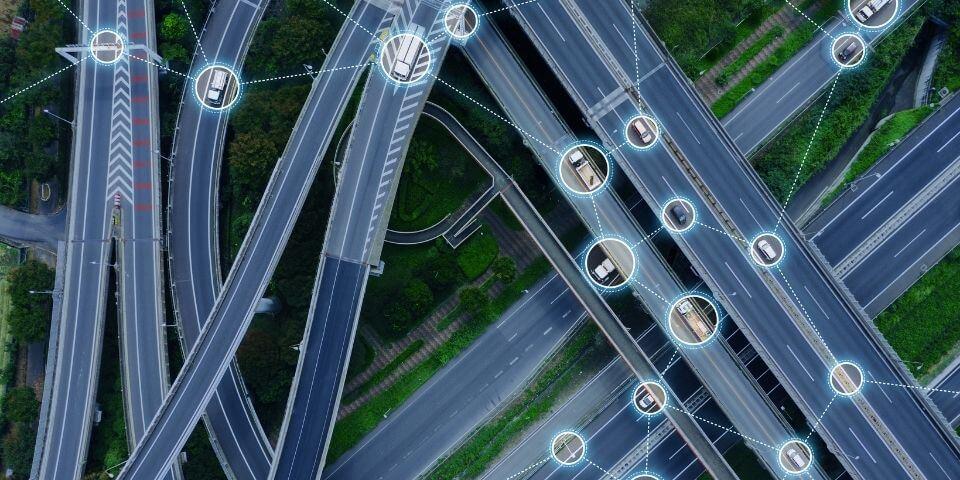
Elon Musk mentions the realization of Level 5
Meanwhile, on the private sector level, Elon Musk, CEO of US EV giant Tesla, said at a conference held in China in July 2020 that Level 5 was "soon to come true." In addition, according to the CASE strategy analysis results of China's major and emerging EV manufacturers announced by Kyodo News Group's Asia-specialized media "NNA", "Most companies are promoting development to achieve Level 5 by 2030. There is.
Many of them have the impression that they are vaguely aiming for the 2030s, and while the above-mentioned Tesla and others are in the minority, there is no doubt that each company is promoting research and development as a future technology.
If we reach the stage of realizing advanced level 4, level 5 may be in sight. For example, even in bad weather, fully autonomous driving can be performed on all roads with high-precision 3D maps.
Issues in achieving Level 4 and above

In order to achieve level 4 or higher, which enables unmanned driving, there are challenges other than the technical aspect of the autonomous driving system.
The first is legislation and international standards. Level 4, where social implementation begins mainly with mobile services, is likely to be realized in the form of approval in many cases. In a specific ODD, it is an image to judge each time what kind of service to provide with what kind of autonomous driving system equipped vehicle.
In order to popularize such services, it will be necessary to develop laws that make unmanned driving possible and to formulate specific guidelines for practical use. In the process, ODD will also be organized, and it is expected that it will be clearly systematized from ODD that is relatively easy to implement to ODD that requires advanced level 4.
The other is infrastructure development related to autonomous driving. It is necessary to change the road traffic environment itself, such as the development of high-precision 3D maps and road-to-vehicle communication systems (V2I), and in some cases, the establishment of roads prioritized by autonomous driving cars even on general roads.
In addition to this, there are a wide range of issues such as improving cybersecurity and fostering social acceptance, but many of them will be gradually resolved with Level 4 practical demonstrations. Government, academia, and private sector efforts to achieve Level 5 have only just begun.
autonomous driving will make big strides in the 2020s
Social implementation of Level 3 and Level 4 will soon begin in earnest, and it is likely that they will evolve and spread around 2030.
What level of technology will it reach in 10 years? I wonder if you can see a glimpse of level 5. I would like to pay more attention to future research and development.
Inquiry
the Company, Macnica, provides a variety of products and services related to autonomous driving. If you have any questions or requests regarding autonomous driving, please feel free to contact us below.
